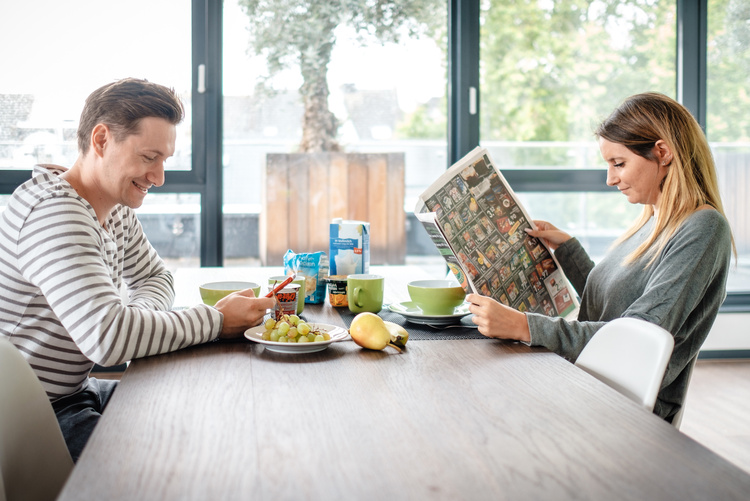Together with IFH Köln, we took an in-depth look at the leaflet in 2020 as part of our series of studies. The result: leaflets are popular and widespread in Germany. 87% of Germans read leaflets at least occasionally, 75% of them even weekly. Neither age, gender nor income play a role here - leaflets are popular at all demographic levels. More than 2,000 people representative of the population were surveyed for the study.
The leaflet also has numerous advantages for retailers. With its uniquely high reach, the leaflet is the leading sales medium: 40% of leaflet readers make more purchases after reading it, and the choice of shopping location is also significantly influenced by it. The leaflet also contributes to image and brand and can be used as an important brand ambassador in the media mix.
"The leaflet offers retailers an attractive opportunity to address customers directly - even beyond the mere communication of offers. Our study underlines the relevance of leaflets for retail communication and shows why it is important to invest in target group-oriented leaflet advertising," says Dr Kai Hudetz, Managing Director at IFH Cologne.
Nevertheless, the EHI Retail Institute now has serious doubts about print and leaflets. The "Marketing Monitor Retail 2021-2024" study concludes that the pandemic has reached the "tipping point" for leaflets, i.e. the irreversible shift from haptic to digital. Well-known industry media such as Lebensmittelzeitung, Horizont and Lebensmittelpraxis have also picked up on this report extensively in recent days. We have therefore taken a closer look at the study.
The first thing that stands out is the small sample size: 55 people from 36 companies and seven sectors were surveyed. With around 300,000 retail companies in Germany, this is a very small sample size - which raises the question of how representative the statements made in the study are. With only around 13 respondents, the food retail sector is also heavily underrepresented.
Furthermore, among these 36 companies surveyed, the advertising budgets of smaller companies with an annual turnover of 500,000 euros are weighted just as heavily as those of global players with an annual turnover of over 10 billion euros. Here, too, the representativeness must be clearly questioned - can advertising budgets of such different sizes be weighted equally in this way?
The results were collected in the highly coronavirus-influenced period of March and April 2021, a period that describes a state of emergency and in which many retail companies had to remain closed due to the federal emergency brake. Nevertheless, the study aims to infer a potential linear development for the next three years until 2024. However, it is almost impossible to draw any conclusions based on these projections and data.
What do industry experts say?
"Why print? Because it works! Contrary to numerous current discussions, the KODi leaflet is the best proof that print is not dead - we recorded an immediate sales peak after using our last leaflet. I therefore do not share the EHI's assessment. Supplementing print with digital measures in order to increase reach and address potential additional target groups is of course part of a functioning communication mix," explains Babak Kharabi, Managing Director at KODi.
The leaflet is still the key lead medium for food retailers. This has been proven once again during the coronavirus pandemic: With its immense reach, the leaflet is undisputedly the most important medium for communicating offers. This is also confirmed by Florian Simon, who is responsible for one of the largest EDEKA stores in the Hessenring region: "We use it to reach our customers across the board every week and not only increase sales, but also create credibility and brand loyalty."
As our representative study shows, there is indeed an increase in hybrid use. Dr Kai Hudetz explains: "Digital is not replacing print, rather the channels are in a symbiotic relationship with each other. There are good reasons for this - while the printed leaflet is primarily a rational shopping aid and an emotional stimulus, the online leaflet mainly serves as a pragmatic, smart shopping aid for on the go."
As the market leader in unaddressed household advertising, MEDIA Central organises 15 billion leaflets a year for its customers and thus serves a cross-section of the industry. Even in times of coronavirus, the volume of leaflets distributed has not declined overall. We therefore definitely cannot understand the developments outlined in the EHI study and will not have to say goodbye to leaflets any time soon.

